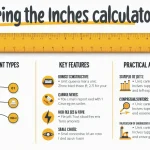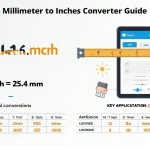Fraction Division Calculator
Is this tool helpful?
How to use the tool
- Enter Fraction 1
- Numerator example: 7
- Denominator example: 9
- Enter Fraction 2
- Numerator example: 11
- Denominator example: 12
- Pick options
- Show Steps: “Yes” for a line-by-line solution.
- Result Format: choose Simplified Fraction or Mixed Number.
- Press “Calculate.” Your answer and, if requested, the working appear instantly.
Core formulas
- Division rule: $$ rac{a}{b}\;÷\; rac{c}{d}= rac{a}{b}× rac{d}{c}$$
- GCD (Euclidean): repeat a mod b until remainder 0.
- Mixed conversion: $$ rac{p}{q}=k+ rac{r}{q},\;k=\lfloor|p|/|q|\rfloor ,\;r=|p|\bmod|q|$$
Example A
Divide $$ rac{7}{9}÷ rac{11}{12}$$
$$ rac{7}{9}× rac{12}{11}= rac{84}{99} $$GCD(84, 99)=3 → $$ rac{84}{99}= rac{28}{33}$$ (simplified). Mixed form not needed because 28 < 33.Example B
Divide $$ rac{-15}{4}÷ rac{2}{3}$$
$$ - rac{15}{4}× rac{3}{2}=- rac{45}{8} $$GCD(45, 8)=1 → already simplest. Mixed: $$- rac{45}{8}=-5 rac{5}{8}$$Quick-Facts
- Input range: ±9 007 199 254 740 991 (JavaScript Number.MAX_SAFE_INTEGER) (MDN, docs).
- Algorithm: Euclidean GCD guarantees lowest terms (Cormen et al., 2009).
- Outputs: simplified or mixed meet CCSS NF.B.3 display norms (CCSSI, 2010).
- Zero denominators blocked; division by zero is undefined (ISO/IEC 9899, 1999).
- Step-by-step mode supports conceptual learning—“visual models improve fraction sense” (NCTM, 2020).
FAQ
Why multiply by the reciprocal?
You convert division into multiplication, a single operation that preserves value and simplifies computation (Brown & Larsen, 2014).
How do I turn a mixed number into an improper fraction?
Multiply the whole part by the denominator, add the numerator, then place over the original denominator—standard Grade 5 method (CCSSI, 2010).
Does the tool handle negatives correctly?
Yes. It keeps the negative sign with the final simplified result, consistent with integer rules (NCTM, 2020).
What happens if I enter 0 as a denominator?
The form blocks submission and shows “Denominator cannot be zero,” preventing undefined math (ISO/IEC 9899, 1999).
Can I input decimals?
No. Convert decimals to fractions first; e.g., 0.2 becomes $$ rac{1}{5}$$ (MathWorld, 2022).
How large can the numbers be?
Stay within ±9 × 1015; beyond that JavaScript loses integer precision (MDN Number, 2023).
Which algorithm finds the GCD?
The calculator uses the classical Euclidean algorithm, “the oldest non-trivial algorithm still in common use” (Knuth, 1997).
Important Disclaimer
The calculations, results, and content provided by our tools are not guaranteed to be accurate, complete, or reliable. Users are responsible for verifying and interpreting the results. Our content and tools may contain errors, biases, or inconsistencies. Do not enter personal data, sensitive information, or personally identifiable information in our web forms or tools. Such data entry violates our terms of service and may result in unauthorized disclosure to third parties. We reserve the right to save inputs and outputs from our tools for the purposes of error debugging, bias identification, and performance improvement. External companies providing AI models used in our tools may also save and process data in accordance with their own policies. By using our tools, you consent to this data collection and processing. We reserve the right to limit the usage of our tools based on current usability factors.







